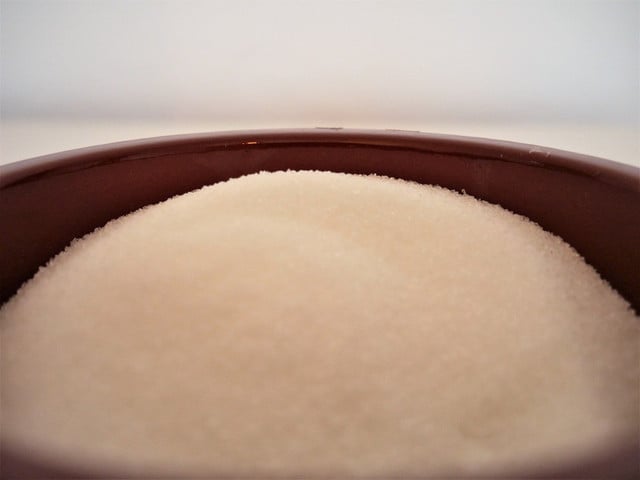
Maltodextrin is a common food additive. Because it provides quick energy, the substance is found in many sports drinks. We’ll tell you what the sugar from corn starch is all about.
Maltodextrin is a plant-based substance that is made from corn starch, wheat starch and potatoes. Its name is derived from the sugars maltose and dextrose – because maltodextrin is a so-called disaccharide, an organic chemical compound from the group of carbohydrates.
In food, maltodextrin is mainly used as a filler and thickener, as a carrier for flavors or as an energy source, for example in energy drinks.
According to the Bavarian Consumer Center, many manufacturers like to use disaccharides because the substance has no particular taste of its own, is easily digestible for most people and is hardly sweet. It passes through the intestines into the blood very quickly and gives the body a lot of energy within a few minutes, similar to glucose.
Maltodextrin: Use and purpose

(Photo: CC0 / Pixabay / Gadini)
If you want to know whether a product contains maltodextrin, first take a look at the list of ingredients on the packaging. If the sugar is used as a direct ingredient in the product, it is listed. However, if the substance is “only” used as a carrier for flavors or vitamins, it does not have to be labeled, according to the consumer center’s online service Food Clarity.
That’s why you can’t be 100 percent sure that a product doesn’t contain maltodextrin, even if it doesn’t say so on the packaging. If you want to avoid foods that contain maltodextrin – or are specifically looking for them – it can help to remember what kind of products the substance is often used in. Maltodextrin is particularly common in the following products:
- Sports nutrition (e.g. energy drinks or energy bars)
- Stevia powder
- Light products
- Baby food
- Ready-made products (e.g. ready-made soups or barbecue sauces)
- crisps
- Sweets of all kinds
Depending on the product, maltodextrin acts as a thickener, fat substitute or energy supplier. It is also often used as an extender or filler, explains the Bavarian Consumer Center.
How maltodextrin works in the body

(Photo: Sven Christian Schulz / Utopia)
According to Netdoktor, maltodextrin causes blood sugar levels to rise quickly but evenly and then fall just as evenly after a while. The exact effect of the substance depends very much on the length of the sugar chains – i.e. its exact chemical composition:
- The longer the sugar chains of maltodextrin are, the slower the body receives the energy because it needs more time to digest.
- Short-chain maltodextrin is absorbed into the blood faster, so the body gets energy faster and it is also a little sweeter. This type of maltodextrin is often found in energy drinks.
- Maltodextrin hardly binds any water and is therefore, according to food clarity, better tolerated than many other substances.
- Among athletes, maltodextrin is also known as a weight gainer. This is because the substance causes the body to release insulin, thereby building muscle faster.
- Many athletes also value maltodextrin as an energy source. Several studies, including a study from the Netherlands, confirm an increase in performance through maltodextrin.
Note: According to the Federal Institute for Risk Assessment and Diabetes Germany, maltodextrin has no proven special effects on the blood pressure or heart rate of diabetics (as was long assumed). However, if you are unsure whether consuming maltodextrin could be specifically unhealthy for you or you would like to find out about possible sugar substitutes in your diet, it is worth seeking advice from your doctor.
Side effects of maltodextrin

(Photo: Sven Christian Schulz / Utopia)
Maltodextrin is used in medicine for severe underweight and in artificial nutrition. It is generally well tolerated. According to Netdoktor, maltodextrin can cause gastrointestinal problems if you consume large amounts.
The Dutch researchers point out that high consumption of products containing maltodextrin leads to weight gain and increased cholesterol and blood lipid levels.
Read more on Techzle\.com:
- Isoglucose: What you need to know about the hidden cheap sugar
- Are protein bars actually healthy?
- Grain sugar: The fructose-free alternative?
Edited by Freya Petersen
** marked with ** or orange underlined Links to sources are partly affiliate links: If you buy here, you are actively supporting Techzle\.com, because we then receive a small part of the sales proceeds. .